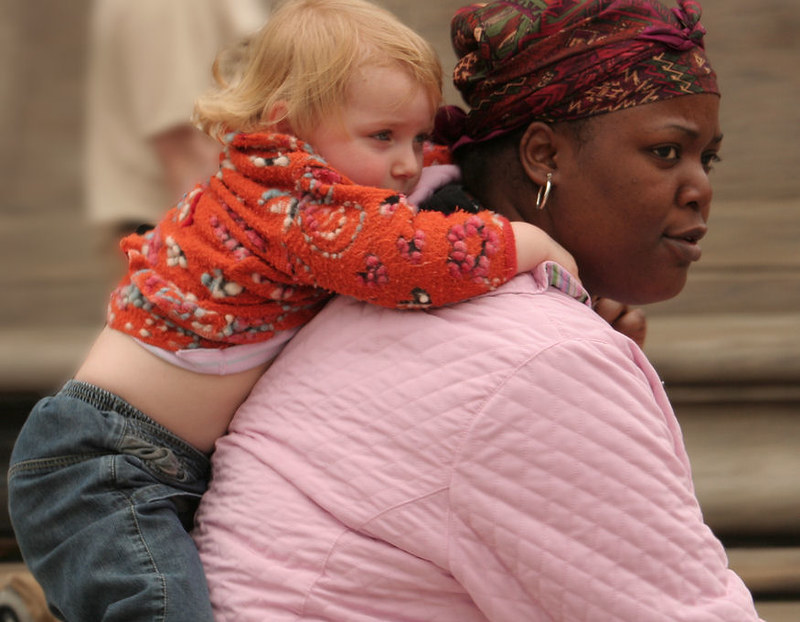The Biden-Harris administration’s proposed investment in care infrastructure would benefit caregivers, those who receive care—and the country’s bottom line.

Investing in the U.S. care infrastructure as outlined in the Biden-Harris administration’s “Build Back Better” proposals will have tremendous economic benefits—but not just in the ways you might think. The case for investing in the care workforce is usually framed around the important benefits to family caregivers (who are predominantly women) and those who receive care (children, older adults and people with health issues that require long-term care). The macroeconomic benefit isn’t often discussed.
When we raise the wages of two of the country’s largest occupations (home healthcare is one of the occupations projected to add the highest number of workers this decade), those workers will spend their new income on goods and services, creating new jobs in other sectors that also tend to employ women and people of color. A dollar earned becomes a bit less than a dollar spent—it is a well-established fact that low-wage earners will spend proportionately more of their income on immediate consumption than higher-wage workers, who have the flexibility to save.
Clearly, care workers do not currently earn family-supporting wages. Median annual wages for childcare workers were $25,460 in 2020, or $12.24 an hour, and $27,080 for home health and personal care aides, or $13.02 an hour. The home healthcare and childcare workforce is 85 percent and 95 percent female, respectively, and disproportionately women of color.

This article originally appears in the Fall 2021 issue of Ms. Become a member today to read more reporting like this in print and through our app.
Recent research by Chirag Lala and me, published by the Political Economy Research Institute, models the effects of the Build Back Better plan and demonstrates the positive impact that investing in high-quality care work has throughout the economy. The Biden-Harris proposals would set a wage floor of $15 per hour for the entire care workforce, increasing the size of the workforce at the same time—and potentially creating about 50 percent more jobs in other sectors like restaurants and retail.
For home healthcare, which suffers from extreme turnover problems, setting a $15 minimum wage will stabilize the 2.3-million-person workforce, benefiting care recipients and their families in ways that we do not attempt to quantify (though the peace-of-mind benefits that come from consistent care for elderly relatives are clear to anyone who has had to juggle turnover during the pandemic).
We focus on the effects of the proposed $400 billion investment over a 10-year period, finding that if part of these funds is allocated to raising the wages of current care workers, there are still sufficient funds to support an additional 741,457 direct care jobs, all at a minimum $15 per hour. As the current and new care workers spend their earnings, 394,611 new jobs will be created in, for example, the restaurant and healthcare industries, resulting in $40.7 billion in total new labor income.
The results are similar for the childcare sector, which includes infant, toddler and pre-K care workers. The American Family Plan proposed a historic investment in childcare to finally establish a real universal childcare infrastructure, which is in especially dire straits from its collapse in 2020 and is continuing to hurt women’s labor force participation, potentially for the next generation.

We modeled the effect of a $42.5 billion annual investment and found that direct job creation in childcare will total 640,410, resulting in a childcare workforce of 1.1 million, all of whom would be paid a minimum of $15 per hour. Indirect and induced job creation equals an additional 334,793. Total new labor income is $41,279,065,576.
Investing in the care workforce has both the intangible human benefits of a well-cared-for society, as well as the dollars-and-cents benefit of generating increased economic activity.
While the exact numbers presented are, of course, only representative, the point is that investing in the care workforce has both the intangible human benefits of a well-cared-for society, as well as the dollars-and-cents benefit of generating increased economic activity. It’s also essential for addressing climate change. As I have written about with Rhiana Gunn-Wright, one of the authors of the Green New Deal, access to care is necessary to ensure equitable access to employment in the clean energy sector, and to pull the carbon-heavy workforce (often men) into care jobs.
As policymakers, care workers and families continue to advocate for establishing a decent care infrastructure in the U.S., remember that what’s good for care workers is good for the economy.
Up next:





